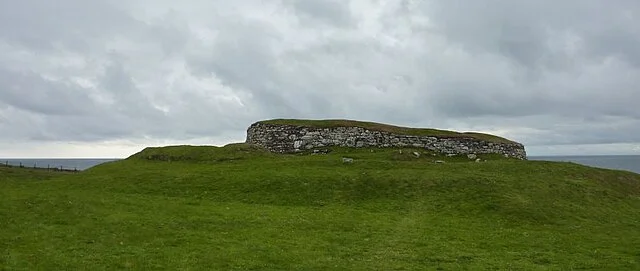The Carn Liath Broch is an ancient stone structure located near Golspie in Sutherland, Scotland. As one of the best-preserved Iron Age brochs in Scotland, it offers valuable insights into ancient Scottish life. Archaeologists and historians regard it as a significant example of broch architecture. Its structure, setting, and artifacts reveal much about the people who lived in the region during the Iron Age, roughly between 500 BC and AD 500.
Get your dose of History via Email
Structure and Architecture
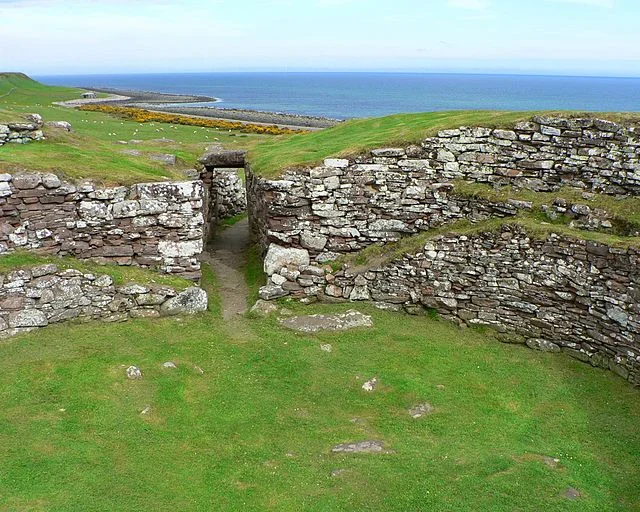
Carn Liath Broch is a circular stone tower built using drystone construction. Like other brochs, it combines both defense and dwelling functions in its design. The structure’s walls are thick, reaching over four meters in some sections, while the interior wall shows signs of a double-wall construction that provided extra strength. This unique feature allowed ancient builders to construct tall walls without the need for binding materials.
Inside, the broch contains several rooms and staircases that wind between the walls. The broch’s layout shows that inhabitants used the space effectively. Researchers believe that they lived on upper floors, while livestock and storage areas were on the ground floor. Small cells within the walls might have served as additional storage spaces.
Archaeological Findings
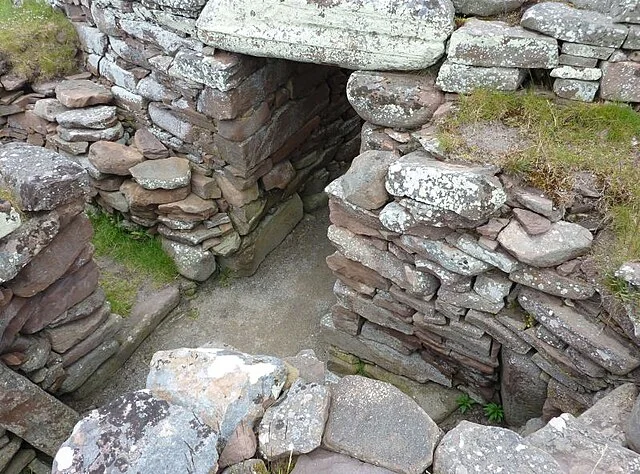
Excavations at Carn Liath Broch have revealed a range of artifacts. These findings include pottery shards, tools, and animal bones, which provide valuable information about the broch’s inhabitants. Stone tools, along with fragments of iron objects, suggest the residents engaged in activities like farming, crafting, and possibly trade. Some pottery resembles Roman styles, implying that broch inhabitants may have traded with or had some contact with Roman Britain.
Additionally, excavations have found bones of domesticated animals, such as sheep and cattle, indicating livestock played a role in their daily lives. These finds reinforce the idea that brochs served not only as homes but also as small centers for agriculture and food storage.
Historical Context
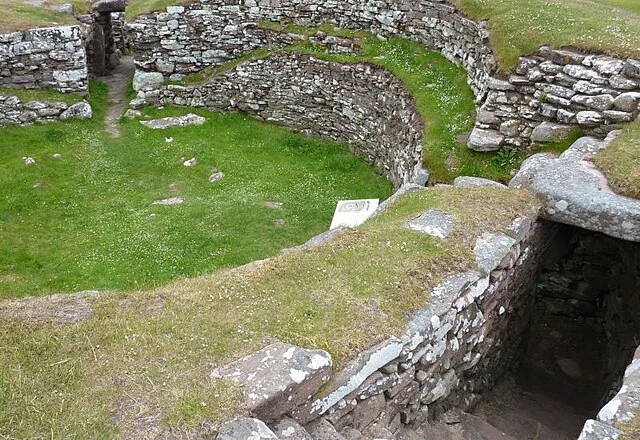
The broch-building tradition reached its height around the 1st century AD, with structures like Carn Liath appearing primarily in northern Scotland. While brochs are often linked to defense, it’s likely they also served as symbols of social status or wealth. The broch’s size and complexity would have required significant resources, suggesting that its builders were well-organized and had considerable influence.
There is evidence that Pictish communities later inhabited Carn Liath. The Picts, known for their intricate stone carvings and warrior culture, lived in Scotland from the Late Iron Age into the early medieval period. Artifacts and changes in the structure hint that the Picts used the broch long after it was initially built.
Preservation and Modern Research
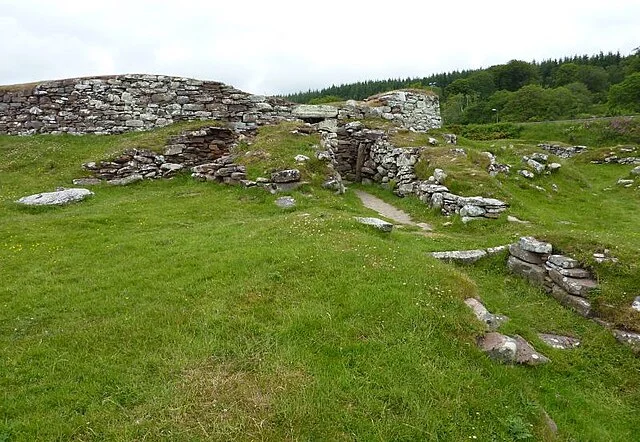
Today, Carn Liath Broch remains well-preserved and accessible to visitors. Archaeologists continue to study it to understand its history and role within Iron Age Scotland. Modern technologies like 3D scanning have helped researchers examine details of its structure and construction techniques. These advancements have made it easier to map its layout and detect subtle architectural features that were once difficult to interpret.
Conclusion
Carn Liath Broch is a valuable monument of Iron Age Scotland, offering insights into ancient building techniques, community structure, and daily life. Through archaeological findings and preservation efforts, researchers gain a clearer picture of how this broch fit into the broader cultural landscape of early Scotland. Its survival allows us to understand the practical, social, and economic roles brochs held for the communities who built and lived in them.
Source:

